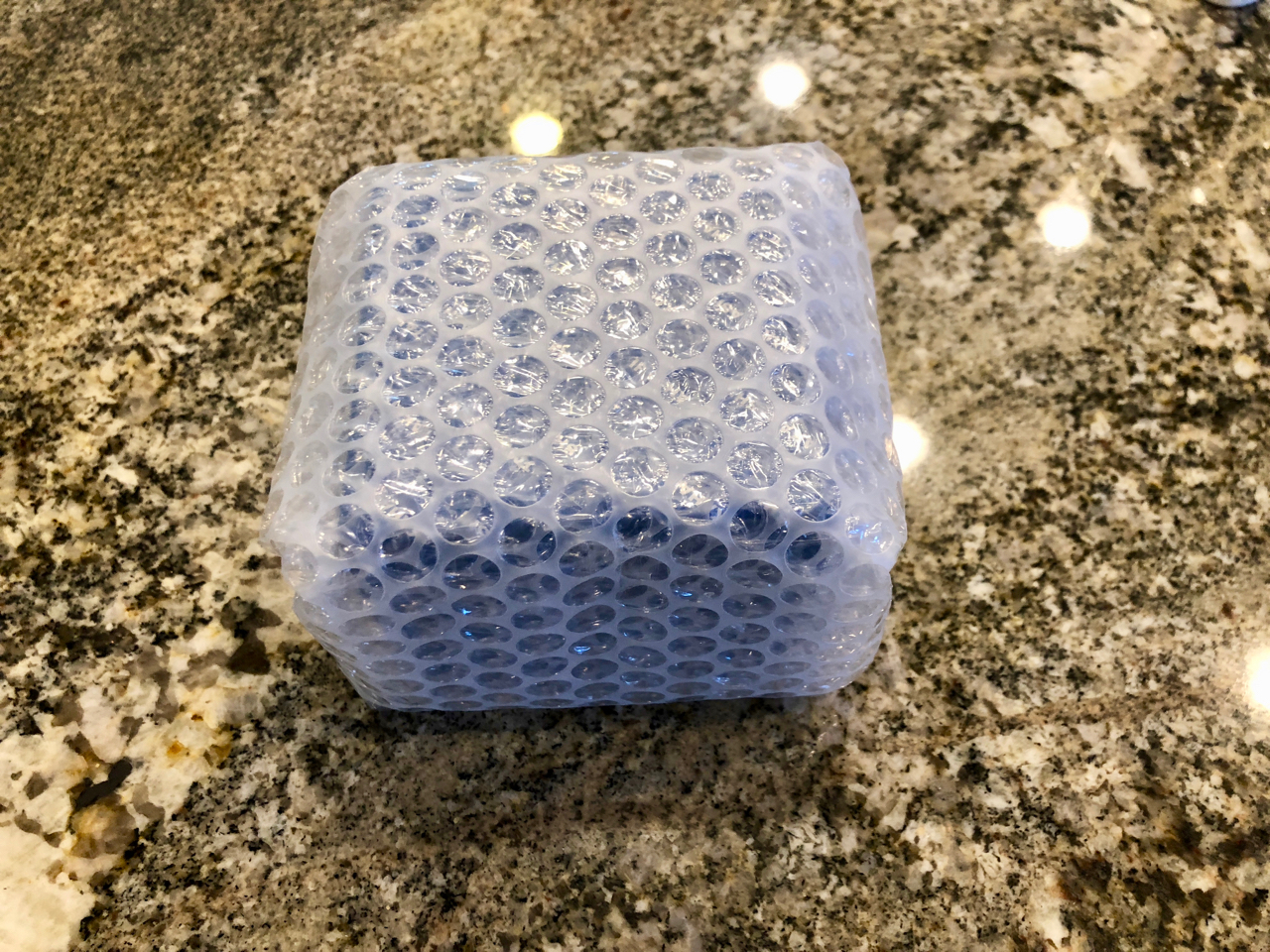The Telescope: Takahashi FSQ-106EDX4
This post goes over my my thoughts when selecting the telescope for my imaging rig.
Trying to follow the advice of the masses, my requirements for the telescope were:
Small(ish) refractor, preferably apochromatic, either with a flat field, or a flattener available. Bonus points if the system allows threaded (vs compression) connections in the imaging train.
The “small(ish)” aspect generally refers to a refractor which is around 80mm, which is about 3”. These refractors tend to have an f-ratio between f/5 and f/7.5, giving focal lengths in the neighborhood of 400mm to 600mm. Apochromatic refers to the design of the the telescope, and is geared for better correction of chromatic abberation (color fringing). The “bonus” part isn’t normally included in the recommendation - but if you try to make this happen I think that you will save yourself a good deal of headache later on– minizing flexure in your imaging train up front will remove at least one headache later.
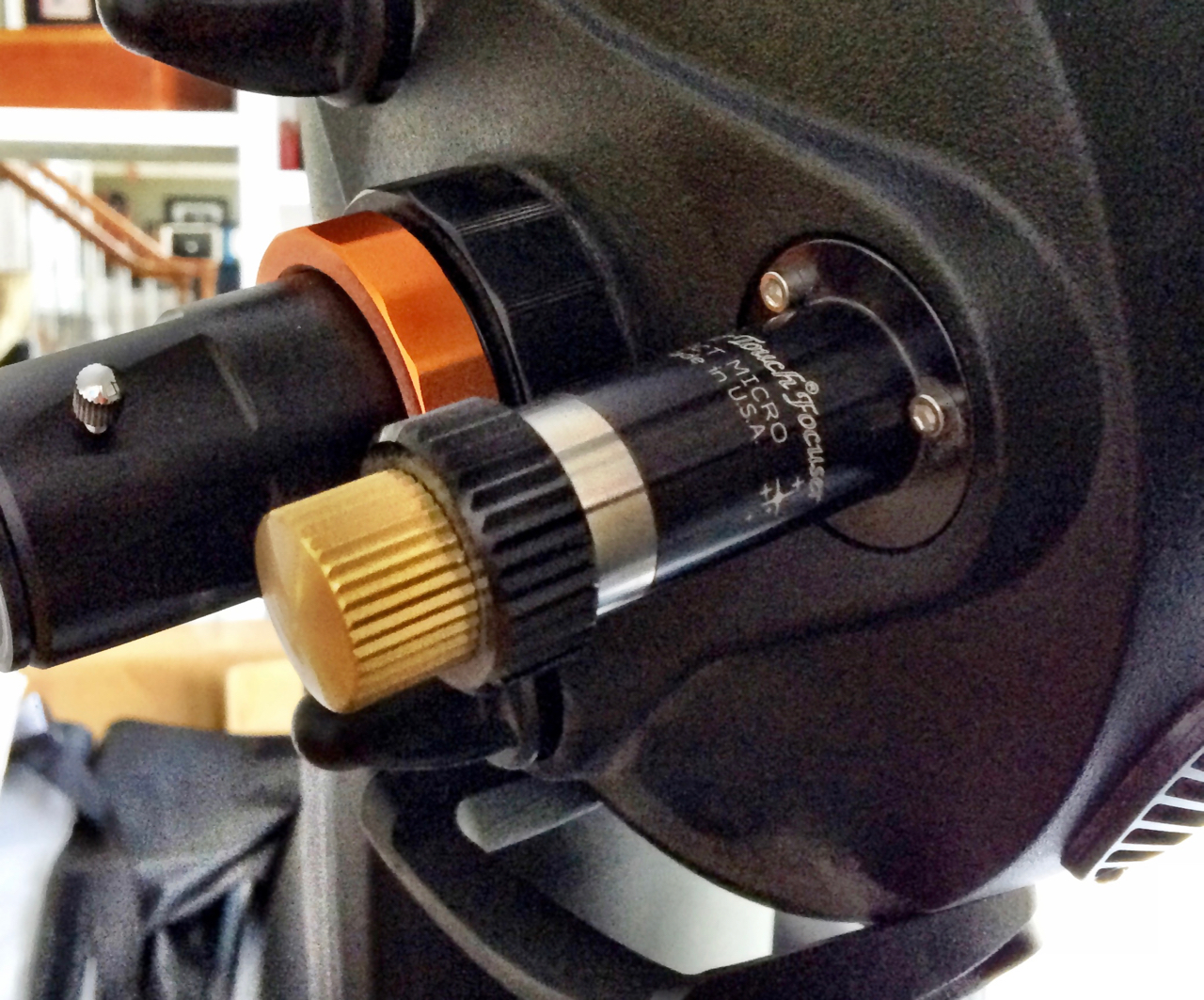
I also wanted solid, automated focusing. My past couple of ‘scopes had very troublesome focusers, though I had upgraded the focuser on the CPC to a Feather Touch dual-speed, 10:1 manual focuser. This focuser has two knobs: an inner, and outer. When you turn the bigger, outside knob, the focus moves quite a bit (the 10x part), while the inner knob moves it just a little. This makes a huge difference in focusing– the dual-speed focuser give you much finer control than the stock single-speed focuser that my CPC came with. Automation, especially when using a mono camera, would have saved even more grief.
The Telescope Choices
Here is a quick matrix of some specs for some of the scopes I looked at- I can’t find the original matrix, so going off of ones that I am sure were on it.
| Manufacturer | Scope | Aperture | Focal Length | f-ratio | Price | Note |
|---|---|---|---|---|---|---|
| Stellarvue | SVS130 Sextuplet Astrograph | 130mm | 655mm | f/5 | $6,645 | Comes with Optec 3” TCF-S3 motorized, temperature compensating focuser |
| Stellarvue | SVQ86 Apochromatic Triplet | 86mm | 460mm | f/5.4 | $2,085 | 3” focuser |
| Stellarvue | SV80ST-IS Apochromatic Triplet | 80mm | 480mm | f/6 | $1,560 | Includes Flattener |
| Takahashi | FSQ-85ED Apochromatic Triplet | 84mm | 445mm | f/5.3 | $1,560 | four element double ED Petzval system, Includes Flattener |
| Takahashi | FSQ-106EDX4 Apochromatic Triplet | 106mm | 530mm | f/5 | $1,560 | Includes Flattener |
| Meade | 6000 Series 70mm Astrograph Quadruplet | 70mm | 350mm | f/5 | $1,199 | |
| Explore Scientific | 102mm FCD100 Apo | 102mm | 714mm | f/7 | $1,499 | |
| Sky-Watcher | 120mm Esprit ED Apo | 120mm | 840mm | f/7 | $3,199 | includes thread-on field flattener |
| iOptron | Versa 108 ED Apo Apochromatic Refractor | 108mm | 660mm | f/6.1 | $1,248 | |
| Celestron | 11” Rowe-Ackerman Schmidt Astrograph (RASA) | 279mm | 620mm | f/2.2 | $3,599 |
Note: Some telescopes come in multiple configurations, so I included the price of the variation I was looking at, along with a link to find out more.
There were a few other brands that I looked at - things like Williams Optics, the Orion EON.
One of the biggest issues with these telescopes was, and still is, availability. The SVS130 is at the top of that list for a reason – if it had been in stock (or had Vic been able to point at a reasonable timeframe) I would have gone with that. It comes with a high-precision, absolute focuser. While the aperture was far away from the target of 80mm, the focal length is short enough to not be comparing to RCs or SCTs.
It was really that way for most of the Stellarvues. “Ooh, sorry, you just missed it!” I kept checking in as I researched, but to no avail– and I had no desire to be placed on an indeterminate waitlist.
Oh, the RASA. Yeah. Talk me down from the ledge… Maybe next time…
I had always heard about Tak’s. The build quality, the optical quality, the scarcity.
 Finally, I was ready to really pull the trigger– funds in hand, I check on OPTCorp’s site:
Finally, I was ready to really pull the trigger– funds in hand, I check on OPTCorp’s site: In Stock. So I nabbed the FSQ-106EDX4, and have had no regrets. Some obligitory unboxing pics are below. After all, if there are no pictures it didn’t happen. So I was able to get a fantastic scope, and got it within a week of ordering. It would be quite some time before I could actually do anything with it.
The Tak has a HUGE image circle, and a mediocre focuser. The detatched focuser looks very nice in my glass-door office cabinet, which is now its new home. I replaced it with a mac-daddy NiteCrawler 3.5 from MoonLite (hit products, then MoonLight NiteCrawler – the website is awful, but the products are great!).
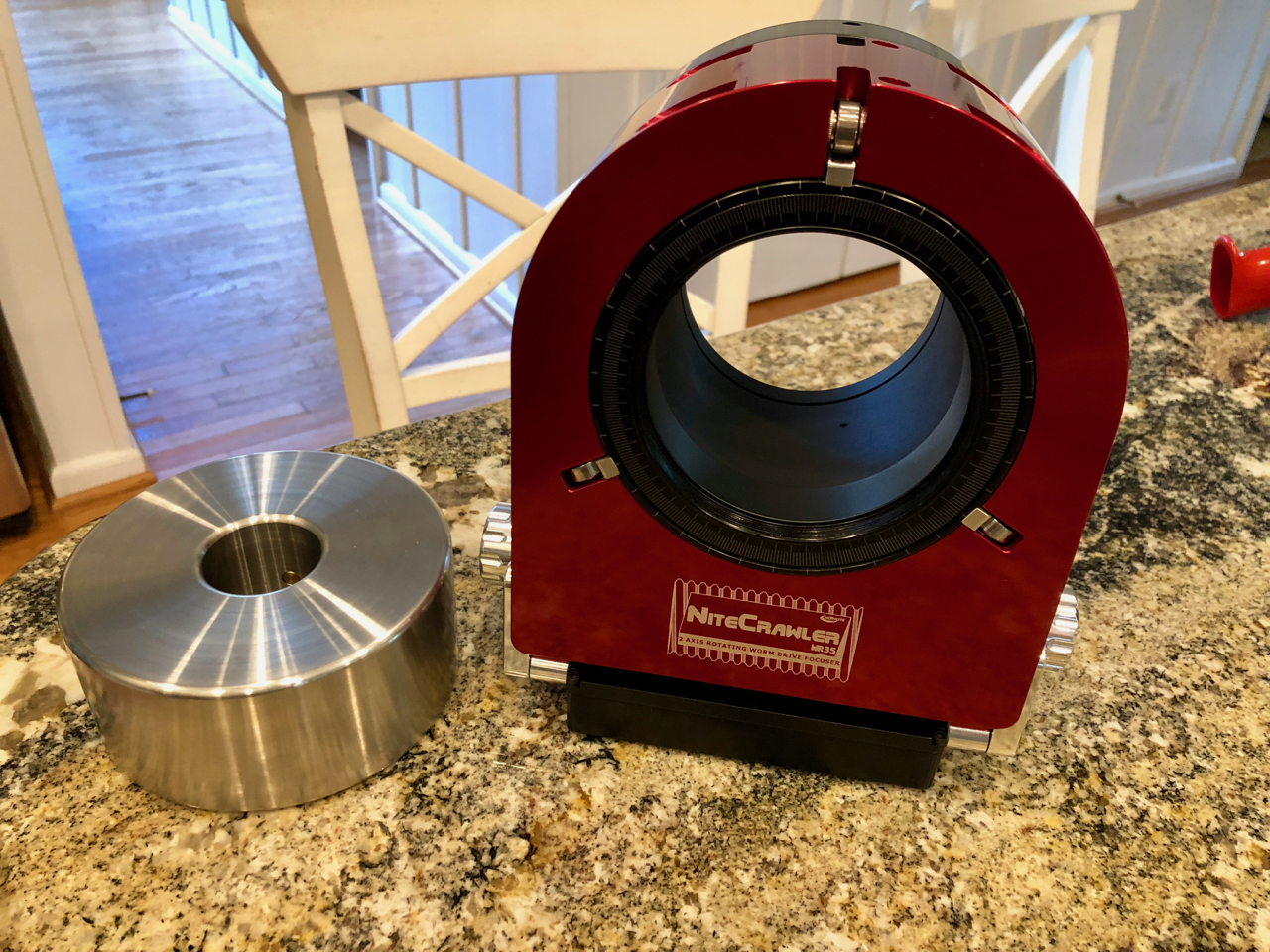
NiteCrawlers come in several colors– I opted for the red to go with the mount. Had I known how much red my rig would have I probably would have chosen a different color, but that isn’t all that important. What is important are the specs on this focuser. First, and foremost, it is also a field rotator. For some ‘scopes you have to pick the size NiteCrawler that you want: 2.5”, 3”, or 3.5”. It was easy for me– the Tak requires the 3.5” version. It’s important to make sure that your focal plane is at the center of the focuser travel when imaging. This gives you the most “oops” room. This involved trial & error, and a whole lot of measuring, since removing the stock focuser requires you to backtrack and figure out your own backfocus. I’ll talk about that sometime in another post. What it came down to for me was I think 2x2” spacers, and one 1/2” one.
Some details about the NiteCrawler
- 25 lb. instrument load capacity
- 2 axis no backlash lead screws
- Field Rotator with .001 (!) degree resolution
- WR35 505,960 steps per revolution
- Focuser travels .0000105” per step or .2667 Microns per step
- Approximately .9” travel - that’s 85,714 steps!
The Unboxing(s)
Takahashi FSQ-106EDX4
Unboxing the Tak was amusing. Triple boxed, with a boatload of peanuts. It did not come with a case, which wouldn’t really help anyway because of the focuser swap.

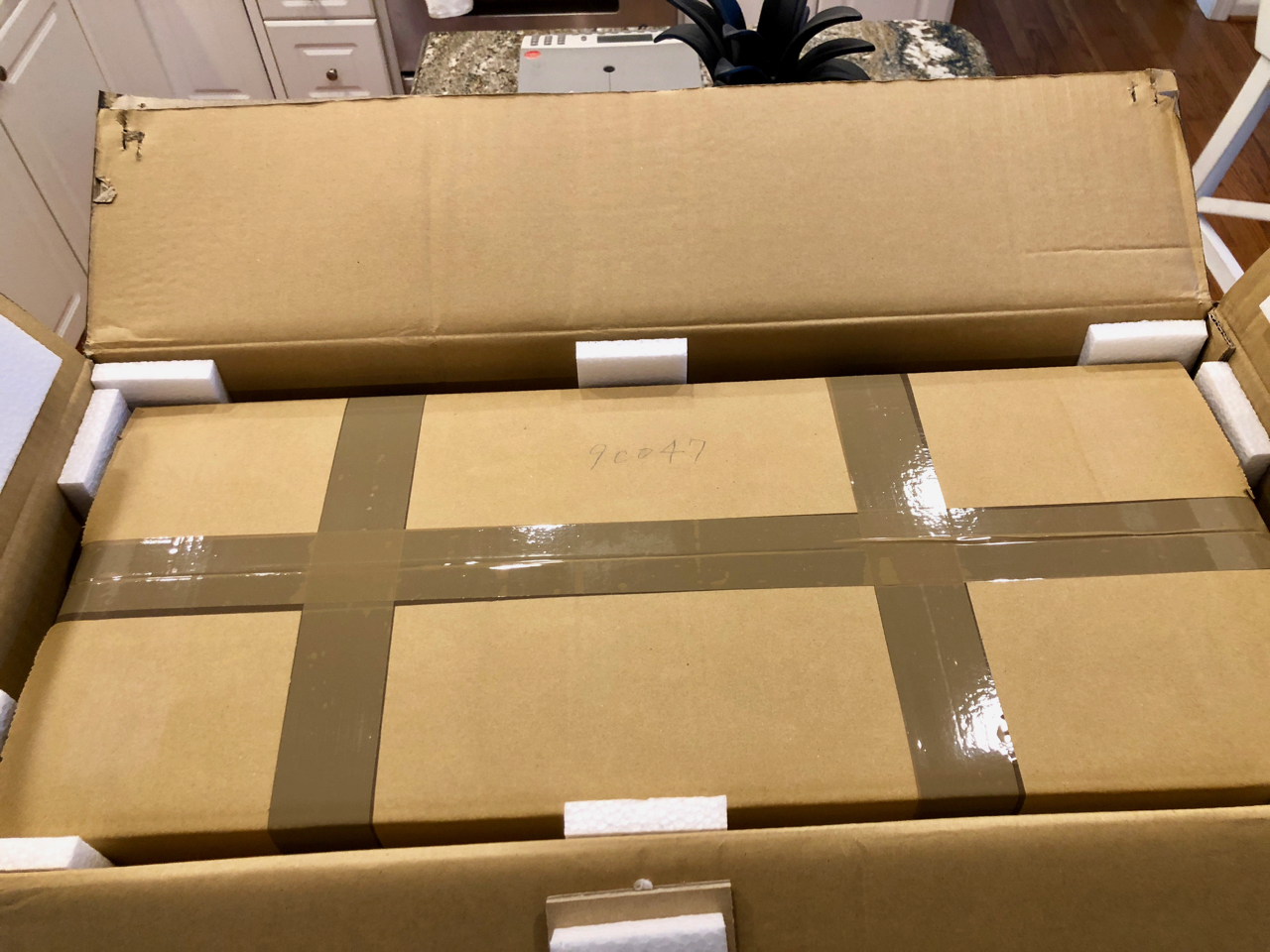

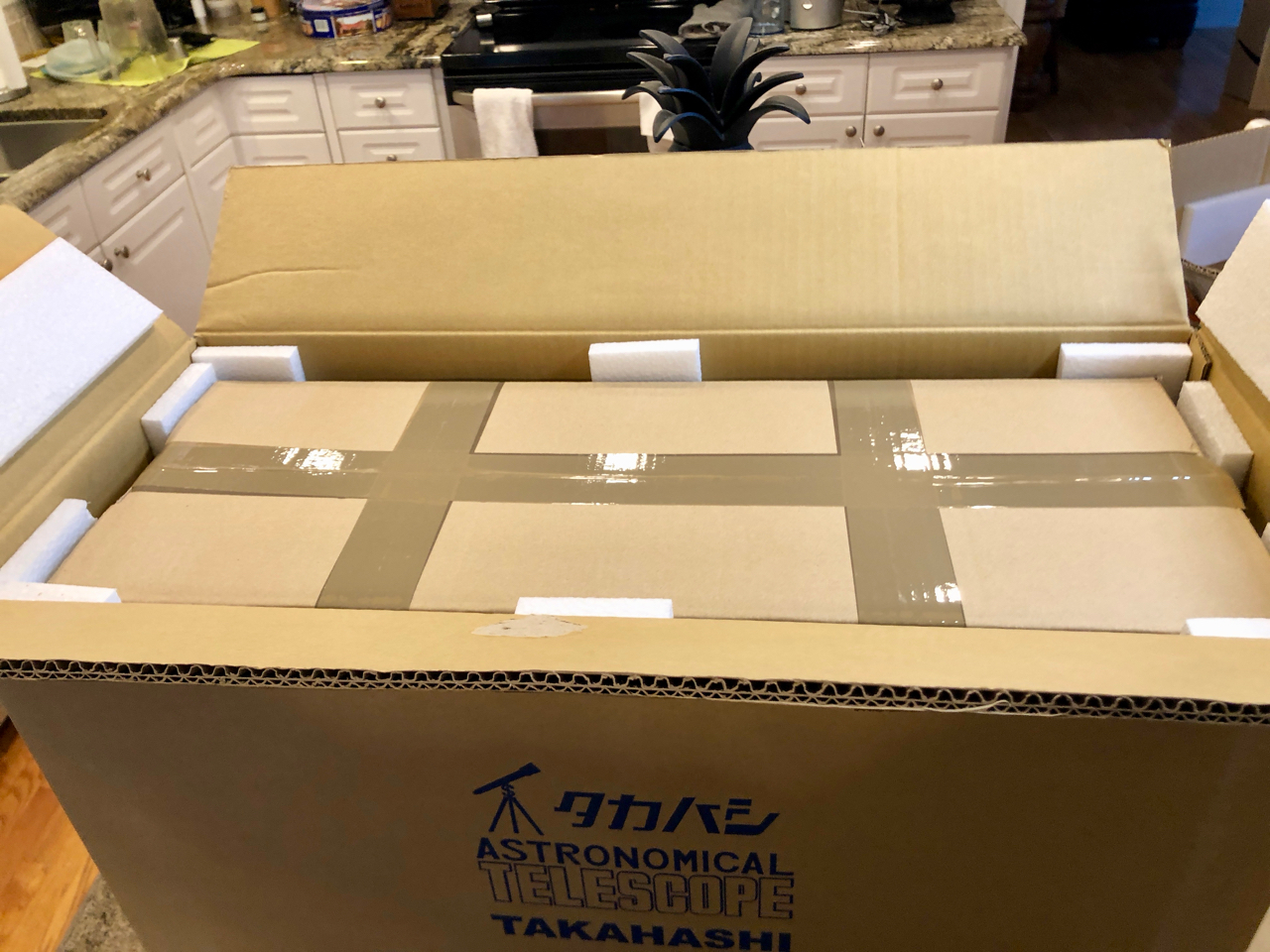
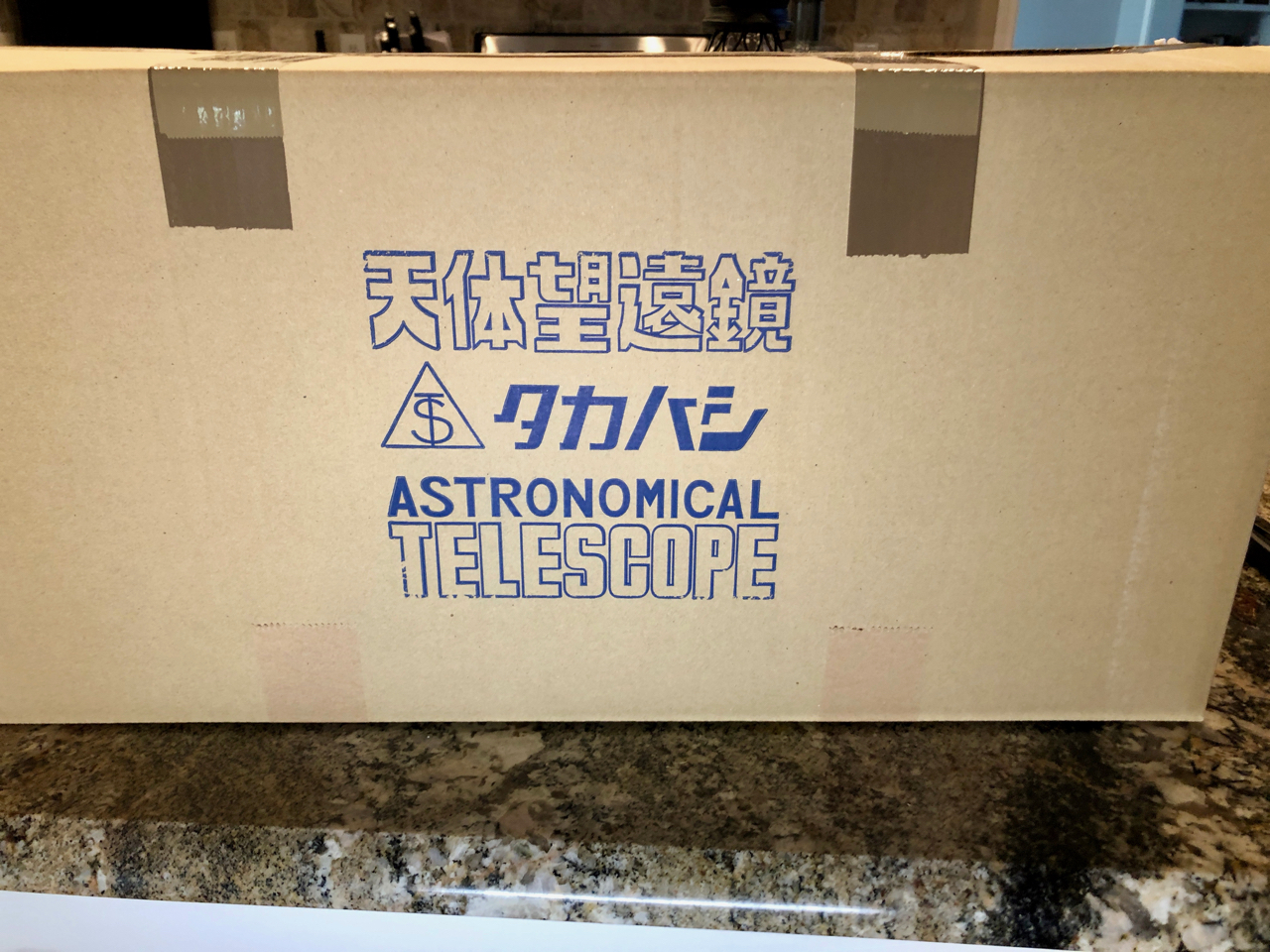



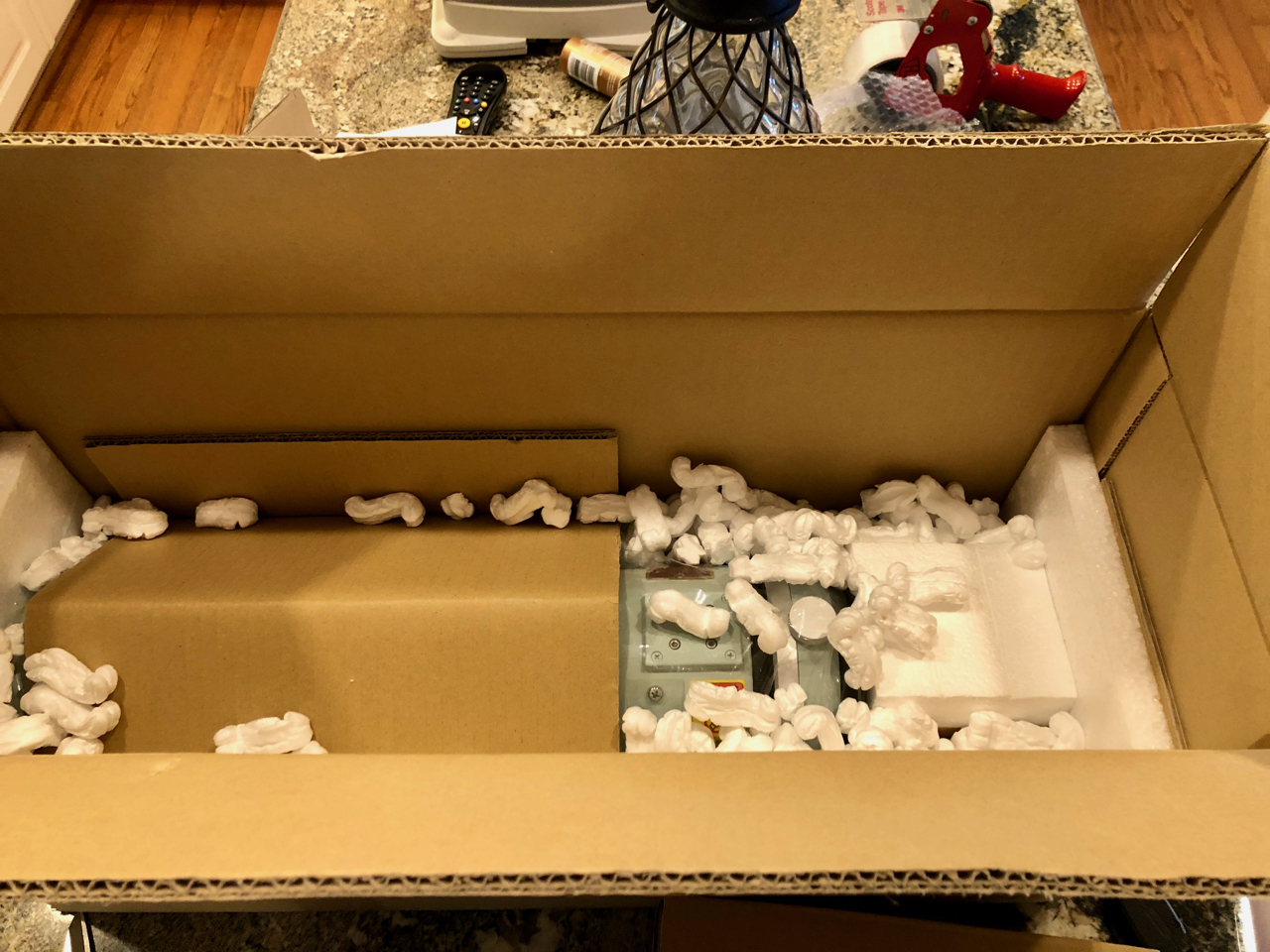

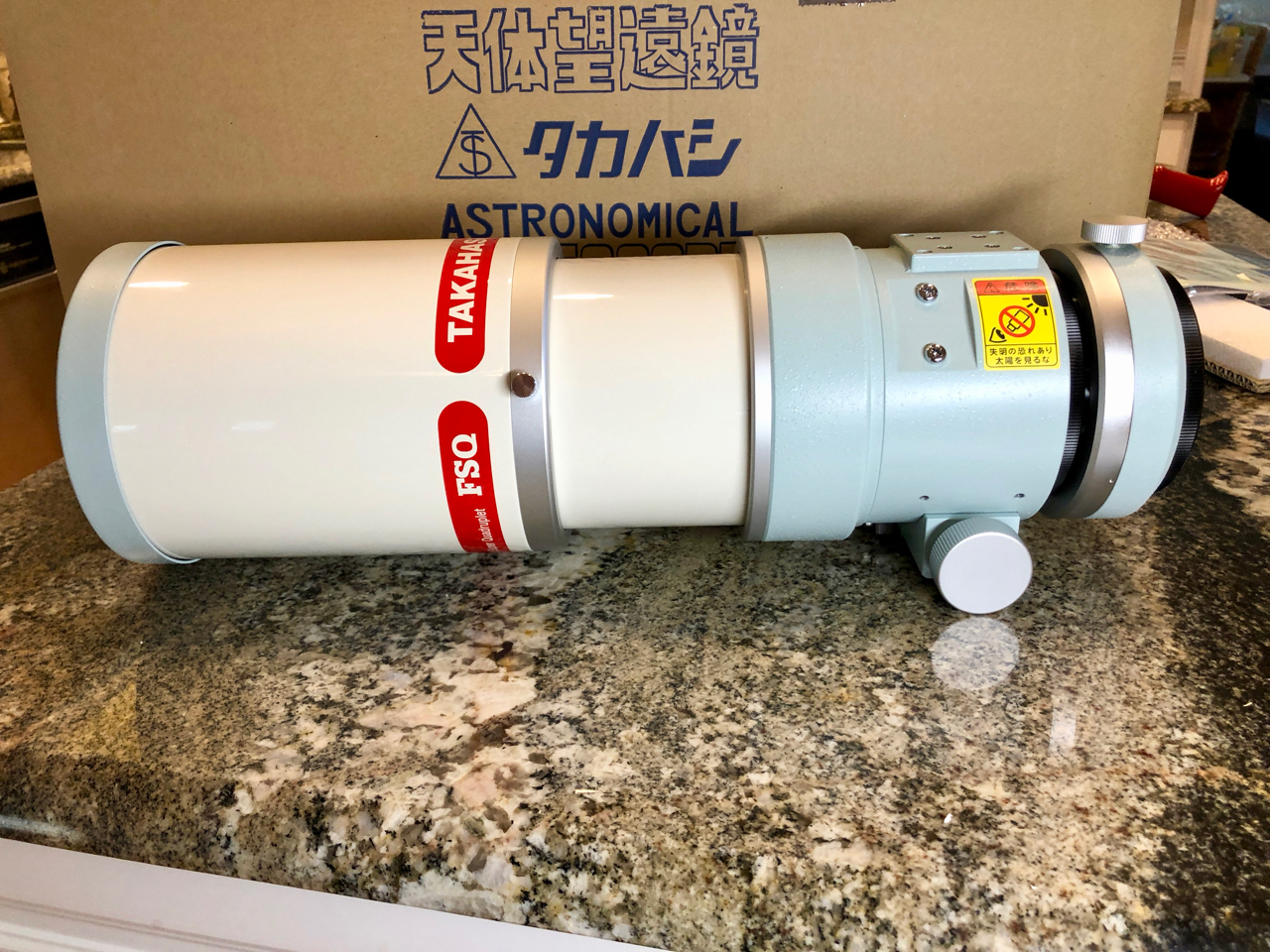


Takahashi Reducer QE 0.73x
This ended up going back.
- It was not cheap (not that the other stuff was)
- I couldn’t get definitive spacing on how to use it with the NiteCrawler
- I already had enough to learn
- I will have plenty of targets without it

I am including a few shots of it anyway, since it really shows the quality of Tak equipment!
